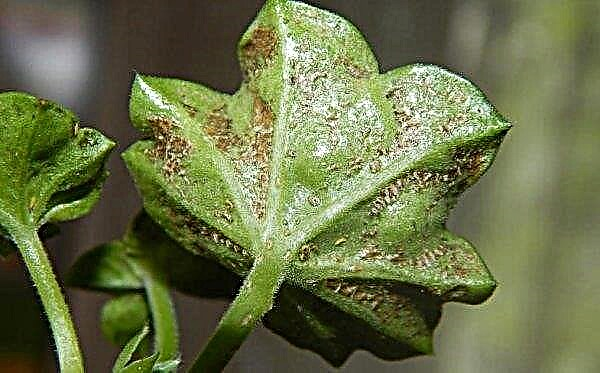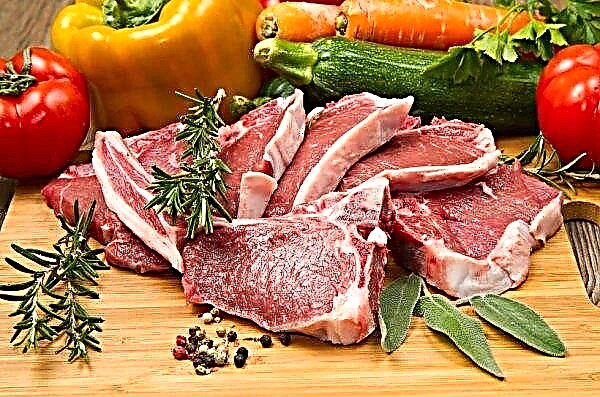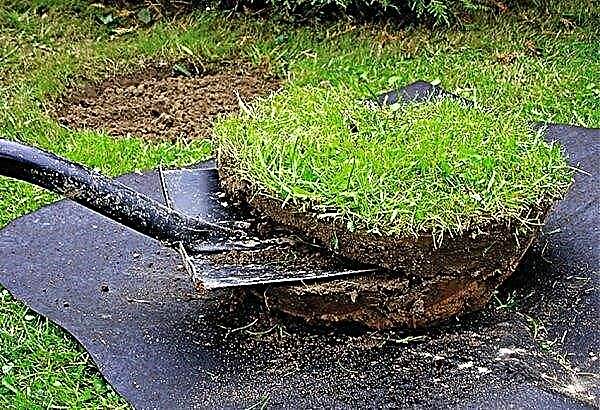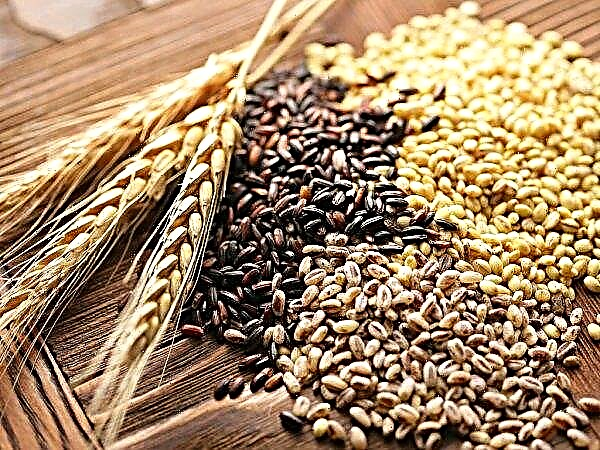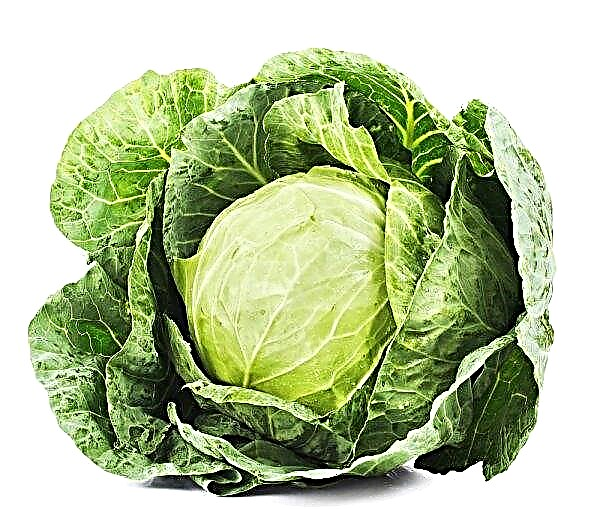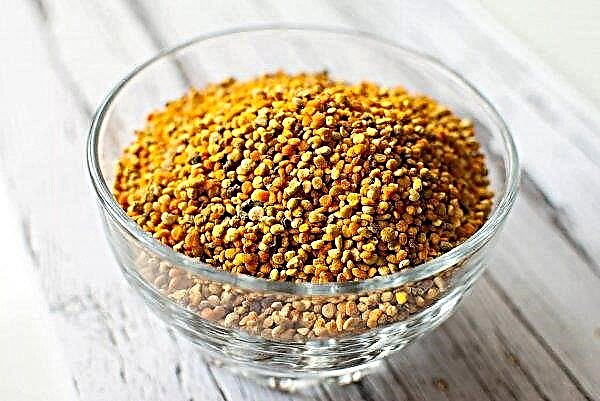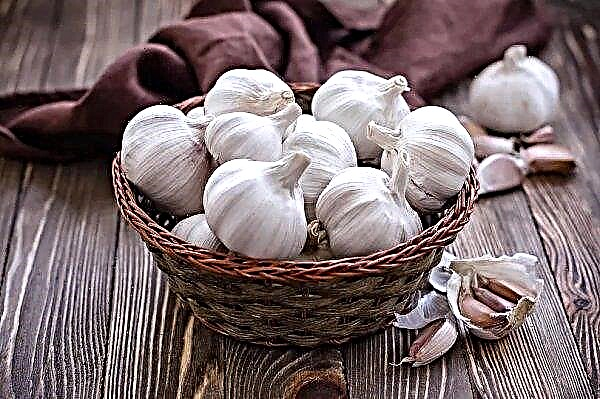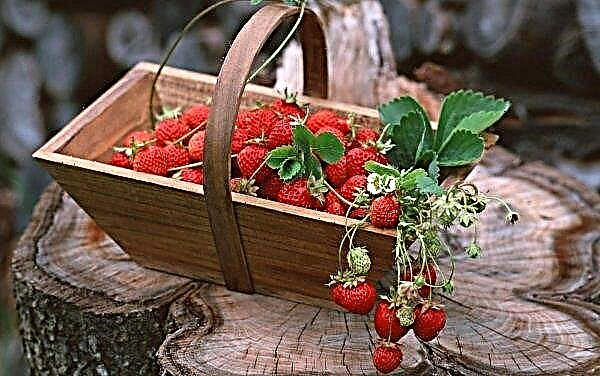Zagorsk salmon breed of chickens is considered meat and egg laying. For large and small farming in Russia, Ukraine and the CIS countries with a difficult climate, this is one of the best options. Zagorsk salmon easily adapt to our climate, are not picky in food, have excellent immunity and tolerate frosts.
Breeding history
The Zagorsk salmon hens breed was created in the USSR in the 1950s. The research institute, then called the Zagorsky state farm for poultry farming (now VNITIP Sergiev Posad), was engaged in breeding. The name of the birds is associated not only with the place of their breeding, but also formed due to the color, reminiscent of the color of meat of the same name fish. In the selection work, four species were used: the rhode island, the Russian white family, New Hampshire, and the Yurlovsky breed. The result made it possible to obtain individuals that differ in both excellent characteristics and pronounced appearance.
Important! If the bird’s chest is interspersed with gray or brown colors, and the rooster has calico color, this indicates that the breed is not clean and individuals must be discarded.
Breeding work allowed them to inherit qualities from the species used, which are predominant, in particular - considerable weight, egg production, omnivorousness and excellent adaptability to various climates, even in Siberian conditions.
Breed description
The breed is ideally suited for maintenance in a private household, it is easy to look after it. It is hardy to climatic changes and frosts, easy to breed, not susceptible to disease, without aggression.
If desired, these chickens and roosters can be used for breeding meat hybrids (broilers). The benefit from this is palpable - in 45 days a weight of 1.5 kg is achieved with good meat qualities. Sexual signs in Zagor birds appear already on the 2nd day after hatching from an egg - roosters are monotonous in light yellow color, chickens have a clear pink spot or 1-3 stripes on their backs. With the growth of individuals, more differences appear in the plumage.
Sexual signs in Zagor birds appear already on the 2nd day after hatching from an egg - roosters are monotonous in light yellow color, chickens have a clear pink spot or 1-3 stripes on their backs. With the growth of individuals, more differences appear in the plumage.
Appearance and standard
The appearance standard of zagorskie birds, depending on gender, allows the following differences:
| Appearance | Description |
| Color | Females - pale pink plumage, tail and fly feather of light brown color. The color of the rooster is black feathers on the back and brown-red plumage, silver tint on the head, fly and tail feathers, chest, tail are black. |
| Head | Rounded, medium sized. |
| Crest | Small in the form of a leaf or a rose, scarlet. |
| Eyes | Red-yellow color. |
| Beak | Small, slightly rounded and slightly curved, yellow. |
| Neck | Of moderate length, the female has brown plumage, and the male has silver plumage. |
| Back | Straight, wide, strong. |
| Housing | Elongated. |
| Chest | Wide, round. |
| Stomach | Females - light pink, males - black. |
| Wings | Tightly close to the body, strong, longer in males. |
| Tail | Short, neat. |
| Paws | Yellow or cream shade, strong, without plumage. |
Character
The breed is friendly, calm, but roosters are less flexible than chickens. Get along well with other breeds. It is recommended that individuals exhibiting aggression be separated from the herd and transferred to meat. Bearing capacity from this will not become lower.
The breed is active, curious. It is optimal to have 8–15 chickens per male.
Did you know? Male Zagorsky birds are vocal, like their Yurlov ancestors, long singing. In order not to disturb the neighbors with an early awakening, it is important to take care of the night's rest of the bird.
Advantages and disadvantages
The breed is attractive for home keeping, for commercial purposes, the convenience of breeding.
- The main advantages of Zagorsk chickens:
- high endurance, since the breed was bred specifically for the climatic conditions of Russia;
- simplicity of maintenance due to unpretentiousness;
- omnivorous as part of a bird's diet;
- good immunity and lack of pedigree diseases;
- calm nature;
- strong instinct of incubation.
- The disadvantages, rather conditional, salmon can be considered that they differ:
- shkodlivosti, due to mobility and natural curiosity (crawl everywhere where it is not fenced, take everything they find);
- the ability to fly up to 2 m in height - the problem is solved by a high aviary or by covering it from above with a chain link.
Content Rules
The unpretentiousness of chickens of this breed should not be misleading - the bird needs to provide everything necessary for it to grow, bring eggs and multiply. She needs a well-equipped chicken coop with a perch and an aviary for daily walking. It is important to make sure several times that there are no gaps in the house and in the corral - the penetration in the cracks of these birds is phenomenal.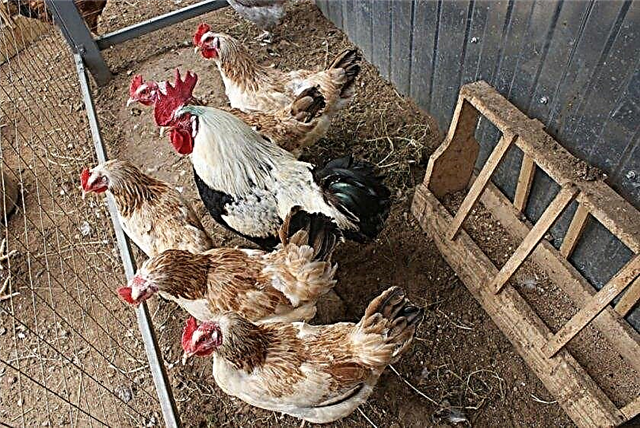 The more acceptable living conditions you create, the better product you will get at the exit (number, size of eggs, weight of individuals, taste of meat). Feeding products are only fresh, must not be moldy and rotten. They eat cereals and compound feed perfectly. Potatoes can be used, but by no means with shoots - for salmon it’s poison. To provide minerals, special additives are used and ordinary crushed chalk, egg shells as a source of calcium.
The more acceptable living conditions you create, the better product you will get at the exit (number, size of eggs, weight of individuals, taste of meat). Feeding products are only fresh, must not be moldy and rotten. They eat cereals and compound feed perfectly. Potatoes can be used, but by no means with shoots - for salmon it’s poison. To provide minerals, special additives are used and ordinary crushed chalk, egg shells as a source of calcium.
Sand with small pebbles is added to the diet or in bulk in the aviary - this helps the bird to chop food. When you need to eat, chickens decide on their own. Vaccinations are not necessary if you live in a favorable area free of poultry diseases and you have less than 100 animals.
Bird house
The house of Zagorsk salmon should be spacious, do not forget, the bird is active. Equip at the rate of 0.5 sq. M. per individual. The floor is covered with sand or sawdust, which should be changed regularly, observing the rules of sanitation. Fine straw is also suitable. Cleaning is done as it gets dirty, it is important to ensure that the room and floor are always dry.
Make sure that the walls are insulated in the cold season, frost resistance does not mean the ability to live in a refrigerator. The acceptable room temperature is about 18–20 degrees. In the cold, peat litter is very good, having an additional warming effect. Nests with perches should be at a height of 0.8-0.9 cm from the floor. The distance between them is 0.5 m, ladders are required. For their construction, wooden bars are suitable. Expect at least 40 cm of roost per chicken. In autumn and winter, additional fixtures are equipped in the house, for example, incandescent lamps with a metal lampshade. This will also serve as an additional source of heat. In spring and summer there is enough light from the windows.
Nests with perches should be at a height of 0.8-0.9 cm from the floor. The distance between them is 0.5 m, ladders are required. For their construction, wooden bars are suitable. Expect at least 40 cm of roost per chicken. In autumn and winter, additional fixtures are equipped in the house, for example, incandescent lamps with a metal lampshade. This will also serve as an additional source of heat. In spring and summer there is enough light from the windows.
The chicken coop should be regularly ventilated, not forgetting to equip in it special manholes with shutters through which the bird will go out for a walk in the aviary. The shutters are locked at night.
Patio for walks
The mobility of these chickens obliges owners to equip a spacious aviary for their walks. Keeping birds in cages is strictly forbidden - this will affect the quality of eggs, weight and taste of poultry for the worse. Birds need frequent and long walks - during them they collect from the ground the substances they need that they did not get from the feed. In winter, you should also have a place for walking, but not on the street, but on the south side of the house, the barn. Since birds have the ability to take off high, the walls of the enclosure must be higher than 2 m or the entire enclosure is covered with a net. The courtyard for walks should have a canopy from rain and the sun, but not over its entire area. Inside, place feeders, containers of water and dishes with sand if it is not on the ground.
Since birds have the ability to take off high, the walls of the enclosure must be higher than 2 m or the entire enclosure is covered with a net. The courtyard for walks should have a canopy from rain and the sun, but not over its entire area. Inside, place feeders, containers of water and dishes with sand if it is not on the ground.
Feeding troughs and drinking bowls
The number and size of feeders, drinkers, count on the number of livestock. It is important that all individuals have the opportunity to eat at the same time, and it is convenient for them. Do not put the feeders too wide so that the hens do not climb into them whole.
It is best to take drinkers of a closed type - so the water will remain clean, the bird will not be able to splash in it. Closed drinkers are good in that the water will not splash, which means that the floor will remain dry. Humidity in the house quickly leads to the disease of birds of this breed.
It is necessary to put separately the baths with sand and ash mixed. A small amount of very fine gravel may be added to this mixture. Sand on the contrary, it is desirable to use large. To prevent birds from stamping on feeders and bathtubs, do not place containers on the floor. The best solution is to hang it at a level where chickens can easily get food while standing on the floor.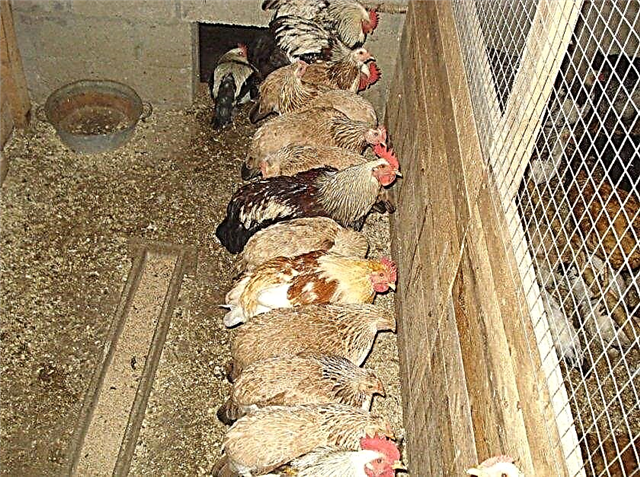 Rinse and disinfect monthly drinking and feeding containers. For disinfection, hydrogen peroxide or chlorhexidine is suitable.
Rinse and disinfect monthly drinking and feeding containers. For disinfection, hydrogen peroxide or chlorhexidine is suitable.
Seasonal molt
The seasonal change of feather in the breed is quick, and it takes place almost simultaneously at all. Manifestations are not so obvious - there are no bare areas on the body, only skin gaps through the plumage. The new plumage grows well, and chickens during this period do not harm each other. To support the body, it’s good to add fortified food, bone meal to the diet.
During seasonal molting, laying hens do not give eggs. Egg production is restored after two or three weeks after the feather has fully regrowed. Shedding time is usually in the fall (October – November). If the weather has deteriorated during the period of the feather change: it has become windy, damp, it is better to walk the hens on the street until the cover is completely restored.
Herd replacement planned
In old laying hens, the size and weight of the eggs decreases markedly, their number decreases. In Zagorsk salmon, this occurs in 3-4 years (each individually, maybe later). Such chickens are usually put on meat and a planned replacement of the herd is carried out.
Age-related problems are the norm, but do not rush to conclusions if you notice a decrease in productivity - each hen annually takes a “vacation” for recovery. Often it coincides with molting when egg production is stopped. After everything returns to its place, some individuals remain very productive for 10 years. To replace the herd with young birds, you can buy or breed them at home in natural conditions. Laying eggs of this breed are 100% fertilizable, hatchability is 98% with the safety of chickens in 90%.
To replace the herd with young birds, you can buy or breed them at home in natural conditions. Laying eggs of this breed are 100% fertilizable, hatchability is 98% with the safety of chickens in 90%.
Feeding ration
The omnivore of the breed still requires competent preparation of the diet. Crushed and whole sprouted grain is well combined with compound feed. Protein top dressing has an excellent effect on egg production and egg quality. Vegetable additives are also necessary (boiled root crops).
Important! Combined feed for chickens is good, but do not abuse it - laying hens of birds from Zagorsk quickly get fat, rush badly or even stop. You can also not give a lot of chalk - in the digestive tract it can stick together in a lump and clog the intestines.
Adult chickens
Zagorsk salmon have an excellent appetite. The basis of their daily diet: wheat, millet, barley, corn. In the livestock menu, it is necessary to include in addition:
- fresh herbs - in the winter you can herbal flour or vegetables;
- meat and bone meal, fish waste, small boiled fish;
- fish oil in the cold season (2.5 ml per day per adult head);
- small shells, coarse sand, grated chalk.
 Adult chickens should be fed twice a day. The feeding schedule in the autumn-winter time is three times a day. In the early morning and evening, a grain mixture is always given. In the afternoon, you can give a mixture of boiled vegetables and moist combined feed.
Adult chickens should be fed twice a day. The feeding schedule in the autumn-winter time is three times a day. In the early morning and evening, a grain mixture is always given. In the afternoon, you can give a mixture of boiled vegetables and moist combined feed.Chickens
The chickens of this breed must be kept the first ten days of their life around the clock at a temperature of +32 ° C. This is an important condition for active eating by chickens. You can reduce the temperature with the achievement of two weeks of age.
Chicken ration:
- The first 5 days - corn grits and boiled eggs;
- 6-14th day - chopped greens (onion stalks), cottage cheese, kefir, yogurt are gradually introduced;
- from 14 days of age - accustoming to a combined feed dipped in yogurt.
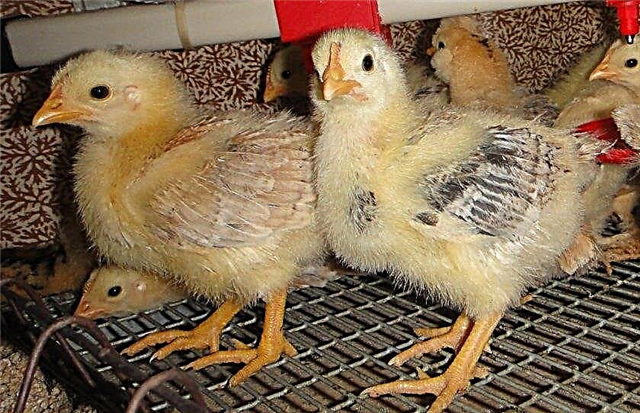 Walking in the yard is allowed when the chickens reach 2 months of age. Then crushed grain is introduced into the diet. Normal nutrition and sharing with adult Zagorsky individuals is carried out from 3 months of age. Chickens are calm in nature, not cowardly, adult individuals are not prone to hatching of young animals.
Walking in the yard is allowed when the chickens reach 2 months of age. Then crushed grain is introduced into the diet. Normal nutrition and sharing with adult Zagorsky individuals is carried out from 3 months of age. Chickens are calm in nature, not cowardly, adult individuals are not prone to hatching of young animals.In addition to the advantages mentioned, Zagorsk salmon chickens are not only productive and tenacious, but also very smart, responsive to good care. Thanks to the unusual plumage, they are a real decoration of the courtyard.

